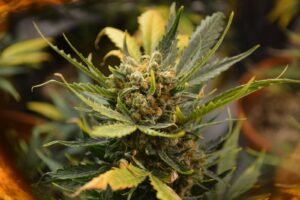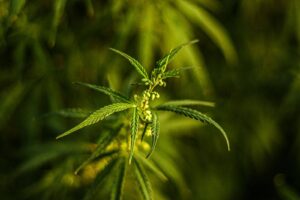Do you ever wonder why two cannabis products that look almost identical can feel so different? Maybe you pick up two buds that smell similar or have matching THC percentages, yet the effects are miles apart. In the cannabis commercial world, chemical composition is the key factor behind every aroma, flavor, and sensation you experience.
It is not enough to judge by appearance or even a single metric like THC content. Understanding what’s inside the product gives you a real edge as a consumer, helping you choose what works best for you.
As a grower, it allows you to craft standout strains, and as an investor, it positions you to identify future-proof opportunities. Chemical diversity shapes everything from therapeutic benefits to the overall enjoyment of cannabis.
Let’s dive into the complex yet fascinating world of cannabis chemistry and see why it matters more than ever.
Understanding the Chemical Diversity of Cannabis
Cannabis is not just a plant. It is a chemical powerhouse packed with hundreds of active compounds. These substances shape everything you experience, from how a strain smells to how it affects your body and mind.
In the cannabis commercial landscape, understanding this chemical diversity is not optional. It is critical. Here is why it matters:
- For brands: understanding chemical diversity helps create targeted products that meet specific consumer needs. It allows you to differentiate your offerings and strengthen your brand’s position, appealing to consumers seeking tailored, high-quality experiences.
- For consumers: It enables informed choices that match personal preferences and goals.
- For regulators: It provides the foundation for setting consistent standards that protect public health.
- For medical professionals: It helps guide treatment plans by matching cannabinoid and terpene profiles with specific health conditions.
- For researchers: It provides a foundation for discovering new therapeutic applications and improving breeding techniques.
- For marketers: It enables more authentic and precise product storytelling that resonates with educated consumers.
When you grasp the chemical complexity of cannabis, you gain a clear advantage in a market that is becoming more sophisticated by the day.
Now that you know why chemical diversity matters, it is time to explore the major players inside the plant.
Major Cannabis Compounds
Cannabis contains various compounds, each contributing to the plant’s overall effects and therapeutic potential. These compounds can be broadly classified into cannabinoids, terpenes, flavonoids, and other substances like endocannabinoids and phytochemicals.
For businesses, selecting strains with a higher CBD content may appeal to health-conscious consumers, while THC-heavy strains can target those seeking stronger psychoactive effects.
Understanding these compounds is essential for anyone exploring the medicinal, therapeutic, or recreational use of cannabis.
Cannabinoids
Cannabinoids are the primary active compounds in cannabis that interact with the body’s endocannabinoid system, which regulates functions like mood, appetite, and pain. The major cannabinoids are:
- THC (Tetrahydrocannabinol): The most well-known psychoactive compound in cannabis, responsible for the “high” associated with marijuana use. THC also has therapeutic benefits, such as pain relief, anti-nausea effects, and appetite stimulation.
- CBD (Cannabidiol): A non-psychoactive cannabinoid that has gained popularity for its potential therapeutic effects, including anti-anxiety, anti-inflammatory, and anti-seizure properties. CBD may also counteract some of THC’s psychoactive effects.
- CBC (Cannabichromene): A non-psychoactive cannabinoid thought to have anti-inflammatory, analgesic (pain-relieving), and potential anti-depressant effects.
- CBG (Cannabigerol): Often referred to as the “mother of all cannabinoids,” CBG is the precursor from which other cannabinoids like THC and CBD are synthesized. It has potential benefits for conditions like glaucoma, inflammatory bowel disease, and bladder dysfunction.
- CBN (Cannabinol): Formed when THC oxidizes and degrades over time, CBN has mild psychoactive effects and is known for its sedative properties, often used to promote sleep.
- Acidic Cannabinoids (THCA, CBDA): These cannabinoids are present in raw cannabis and are non-psychoactive. THCA and CBDA may have therapeutic benefits like anti-inflammatory properties and nausea reduction, though they need to be decarboxylated (heated) to convert into their active forms (THC and CBD).
Terpenes
Terpenes are aromatic compounds that contribute to cannabis’s distinct scent and flavor and also influence its effects. Some well-known terpenes in cannabis include:
- Myrcene: Known for its musky, earthy smell, myrcene is the most common terpene in cannabis and is believed to have relaxing, sedative effects.
- Limonene: With a citrus aroma, limonene is thought to have anti-anxiety, antidepressant, and anti-inflammatory properties.
- Pinene: A pine-scented terpene that may aid in focus and memory while offering anti-inflammatory and bronchodilator (breathing aid) effects.
- Linalool: Found in lavender, linalool has a floral scent and is known for its calming, anti-anxiety effects.
- Caryophyllene: This spicy, peppery terpene has anti-inflammatory properties and can interact with CB2 receptors in the body, which are part of the immune system.
Terpenes also work synergistically with cannabinoids, enhancing the overall effects of cannabis through the “entourage effect,” where the combined compounds produce more significant therapeutic benefits than when used individually.
Flavonoids
Flavonoids are plant compounds with antioxidant, anti-inflammatory, and potential anticancer properties. Flavonoids, especially cannflavins, are gaining attention for their anti-inflammatory properties. As consumer interest in holistic wellness grows, cannabis products highlighting flavonoid content could resonate with health-conscious buyers.
These compounds contribute to the plant’s therapeutic potential and enhance its overall health benefits.
Endocannabinoids
Endocannabinoids are naturally occurring compounds in the human body that are structurally similar to cannabinoids in cannabis. They interact with the endocannabinoid system to help regulate various bodily functions. The most well-known endocannabinoids are:
- Anandamide: Often called the “bliss molecule,” anandamide plays a key role in mood regulation, pain relief, and appetite control.
- 2-Arachidonoylglycerol (2-AG): Involved in immune function regulation, pain relief, and inflammation control.
Endocannabinoids help maintain balance in the body, and the presence of cannabinoids like THC and CBD often influences their effects.
Cannabis Isolates
In addition to the whole-plant approach, cannabis isolates are pure forms of specific compounds. These isolates include:
- THC Isolate: Pure THC, used for those seeking the psychoactive effects of THC without other cannabinoids or terpenes.
- CBD Isolate: Pure CBD, often used for its therapeutic effects, such as managing anxiety, inflammation, or seizures.
Cannabis isolates offer more controlled doses of specific compounds, catering to consumers seeking targeted effects.
Psychoactive vs. Non-Psychoactive Compounds
Cannabis compounds can be divided into psychoactive and non-psychoactive categories:
- Psychoactive Compounds: Primarily THC, which produces the “high” and affects cognition, mood, and sensory perception.
- Non-Psychoactive Compounds: Such as CBD, CBG, and CBC, which do not induce a high but may offer therapeutic benefits like reducing anxiety, inflammation, and pain.
Phytochemicals
Cannabis contains other phytochemicals that contribute to its health benefits:
- Sterols: These compounds help support immune function and reduce inflammation.
- Fatty Acids: Cannabis contains essential fatty acids like omega-3 and omega-6, which promote general health and may help reduce inflammation.
While not as well-studied as cannabinoids and terpenes, these phytochemicals contribute to the plant’s overall therapeutic properties.
Synthetic Cannabinoids
Synthetic cannabinoids are man-made compounds designed to mimic the effects of natural cannabinoids like THC. These are often more potent than natural cannabinoids and have been linked to severe side effects and health risks. Synthetic cannabinoids are typically sold under various names, often with unknown and potentially dangerous effects.
So, what are the factors that shape the chemical profile of cannabis? Let us understand this below.
What Shapes the Chemical Profile of Cannabis
Several key factors shape the chemical profile of cannabis, ultimately determining the final aroma, flavor, potency, and therapeutic potential of the product you consume:
- Cultivation Practices: Growing methods, soil composition, irrigation practices, use of nutrients, and exposure to natural elements like sunlight and humidity all play a crucial role.
For instance, an indoor-grown strain might develop a denser bud structure and a different terpene profile compared to the same strain grown outdoors, where it interacts with a broader environmental spectrum.
- Climate and Microclimate: Temperature fluctuations, seasonal changes, and local weather patterns can subtly or dramatically alter cannabinoid and terpene production. Stress factors like drought or high winds can sometimes even enhance certain chemical expressions as a plant defense mechanism.
- Harvest Timing: The exact timing of harvest significantly influences chemical makeup. Harvesting too early or too late can affect THC potency, terpene concentration, and the presence of minor cannabinoids.
PlanaCan simplifies task scheduling by automating cultivation processes with customizable templates. You can outline each step for specific strains or cycles, from planting to harvesting. Once templates are created, tasks can be scheduled onto a calendar with a few clicks, ensuring a streamlined workflow that optimizes harvest timing and plant quality.
- Genetics: The underlying genetics of a cannabis plant dictate its chemical potential. Breeders selectively cross strains to optimize specific cannabinoid ratios, terpene profiles, and even minor compound production. This genetic diversity is the foundation behind the explosion of specialized strains in today’s commercial cannabis market.
- Post-Harvest Processing: After cultivation, methods like drying, curing, and extraction come into play. Proper drying and curing preserve delicate terpenes and cannabinoids, while poor practices can degrade these valuable compounds. Extraction techniques, whether solvent-based or solventless, also determine how much of the original chemical integrity remains intact.
- Storage Conditions: Even after processing, storage has a major impact. Heat, light, oxygen, or moisture exposure can degrade cannabinoids and terpenes over time, altering the product’s quality and effectiveness.
Now, let us discuss the analytical methods used to determine the chemical composition of cannabis.
Analytical Methods for Chemical Analysis Of Cannabis
Scientists rely on advanced analytical methods to accurately understand a product’s chemical makeup. Several key techniques are used to detect, identify, and quantify the chemical constituents of cannabis, such as cannabinoids, terpenes, and flavonoids. For cannabis growers, understanding and utilizing these methods is crucial for optimizing crop quality and consistency.
By accurately measuring these chemical profiles, growers can ensure they are cultivating plants that meet market demands, achieve desired effects, and comply with regulations. Additionally, this knowledge helps fine-tune cultivation practices, leading to better yields and more tailored products for consumers:
- High-Performance Liquid Chromatography (HPLC): HPLC is the gold standard for cannabinoid analysis. It is beneficial because it can detect both the acidic and neutral forms of cannabinoids without needing heat, preserving their natural state.
- Gas Chromatography-Mass Spectrometry (GC-MS): GC-MS is another leading method that is highly effective for analyzing volatile compounds like terpenes. It separates and identifies components based on their mass-to-charge ratio, offering detailed insights into the chemical profile.
- Gas Chromatography-Flame Ionization Detection (GC-FID): Commonly used for terpene profiling, GC-FID provides a highly sensitive measure of volatile organic compounds present in cannabis samples.
- Liquid Chromatography-Mass Spectrometry (LC-MS): LC-MS combines liquid chromatography separation with mass spectrometric detection, allowing for the identification of a wide range of cannabinoids, terpenes, and flavonoids, including those present in trace amounts.
- Spectroscopy Methods (NMR, UV-Vis, FTIR): Advanced spectroscopy techniques like Nuclear Magnetic Resonance (NMR), Ultraviolet-Visible (UV-Vis) Spectroscopy, and Fourier Transform Infrared Spectroscopy (FTIR) are increasingly used for comprehensive molecular characterization, functional group analysis, and purity assessments.
- Microbial and Contaminant Testing: Beyond chemical composition, labs also screen for pesticides, heavy metals, molds, mycotoxins, and residual solvents, ensuring the product meets stringent safety and compliance standards.
- Potency Testing: Specific testing focused on determining the concentrations of major cannabinoids like THC, CBD, and CBN to validate product labeling and dosage accuracy.
- Residual Solvent Testing: Essential for products derived from extraction processes, this testing ensures that no harmful solvents remain in the final product.
- Moisture Content and Water Activity Testing: Measuring moisture content helps prevent mold growth and ensures product stability during storage and distribution.
- Terpene Profiling: Detailed terpene analysis identifies major and minor terpenes, providing deeper insights into the aroma and potential synergistic effects of the cannabis product.
Now, let us understand the regulations needed to shape the commercial cannabis industry.
Regulations Shaping Commercial Cannabis
Chemical composition isn’t just a scientific curiosity; it directly influences legal classifications, quality control standards, and labeling regulations that govern the cannabis industry. Compliance with these regulations not only ensures that products are safe and consistent but also helps build consumer trust.
When consumers can rely on accurate labeling and consistent potency, they feel confident in their choices, fostering brand loyalty. For companies, adherence to these standards establishes credibility, enhances reputation, and differentiates products in a competitive market.
Key regulatory elements include:
- Mandatory Testing: In most legal markets, cannabis companies must submit their products for rigorous third-party testing before selling them. These tests verify cannabinoid content and terpene profiles and screen for contaminants like pesticides, heavy metals, and molds.
- Labeling Requirements: Regulations demand accurate THC and CBD levels reporting on product labels. Some regions also mandate detailed terpene profiles and expiration dates to ensure consumer awareness and product transparency.
- Packaging Standards: Legal cannabis must be packaged according to strict guidelines, including child-resistant features, tamper-evident seals, and clear warnings about potential health risks.
- Batch Consistency: Regulatory bodies often require proof of consistency across product batches. This ensures that consumers receive predictable effects and that brands maintain high manufacturing standards.
- Advertising and Marketing Restrictions: There are rules about how cannabis products can be advertised to prevent targeting minors or making unverified health claims.
- State-to-State Variability: Regulations can differ widely between jurisdictions, affecting allowable products, labeling standards, and testing thresholds.
- Recall Procedures: Companies must often have formal recall plans if a product is found unsafe or mislabeled after release.
- Track-and-Trace Systems: Many regions require seed-to-sale tracking systems to monitor the movement of cannabis through the supply chain, promoting transparency and regulatory compliance.
- Worker Safety Regulations: Standards exist to protect the health and safety of workers in cannabis cultivation and production facilities, including requirements for personal protective equipment, proper ventilation, and chemical handling protocols.
These regulations protect consumers from mislabeling, reduce health risks, and ensure a consistent experience across batches. They also challenge brands to maintain transparency, invest in quality assurance, and build lasting trust in an increasingly competitive market.
Conclusion
The future of the cannabis industry lies in a deeper understanding of its chemical components. For growers, this means more than just focusing on THC levels. As consumer demand for personalized cannabis experiences grows, products will increasingly be tailored to specific needs based on full chemical profiles, encompassing not only cannabinoids but also terpenes and flavonoids.
The good news? There is a huge opportunity for innovation. By focusing on minor cannabinoids, rare terpenes, and flavonoids, you can create unique strains that stand out and meet specific consumer preferences.
PlanaCan simplifies task scheduling and allows you to define and automate your cultivation processes using customizable templates. You can outline each step for specific strains or harvest cycles, from initial planting to final harvest. Once your templates are created, you can easily schedule tasks onto a calendar, ensuring a streamlined and consistent workflow.
It also provides a clear visual timeline for planning and tracking your cultivation tasks. You can plan work months in advance while managing day-to-day activities, with the flexibility to adjust ongoing tasks as needed. This centralization of information ensures that no task is overlooked and that everyone involved is on the same page.
By simplifying operations, improving planning accuracy, and helping growers stay organized, PlanaCan empowers cannabis cultivators to maximize their yields and better manage their crops.
Schedule a free call today to discover how PlanaCan can help you streamline your cannabis cultivation journey and boost your productivity.




